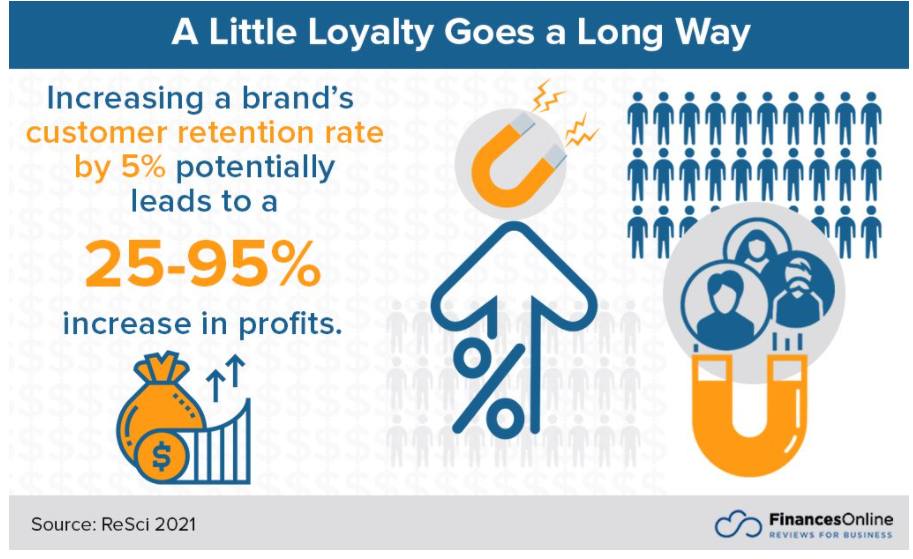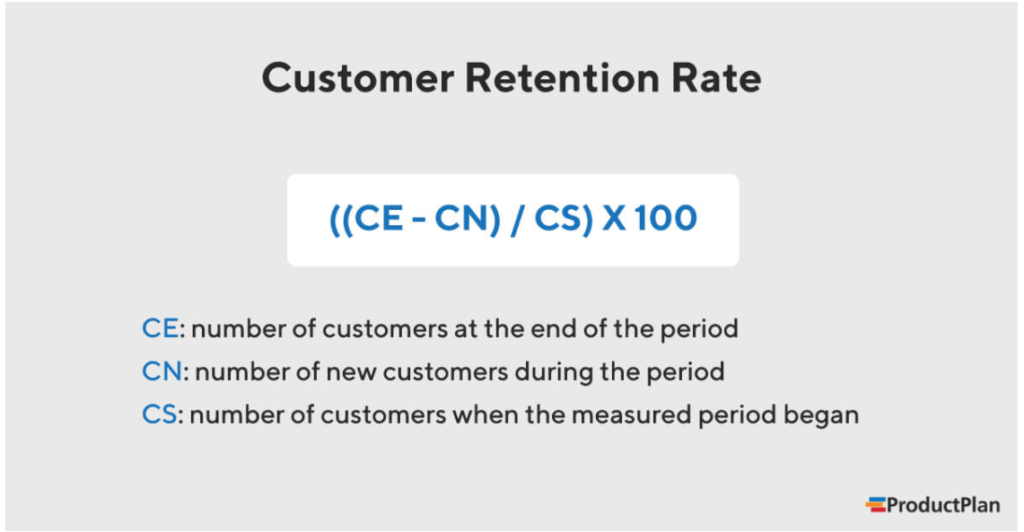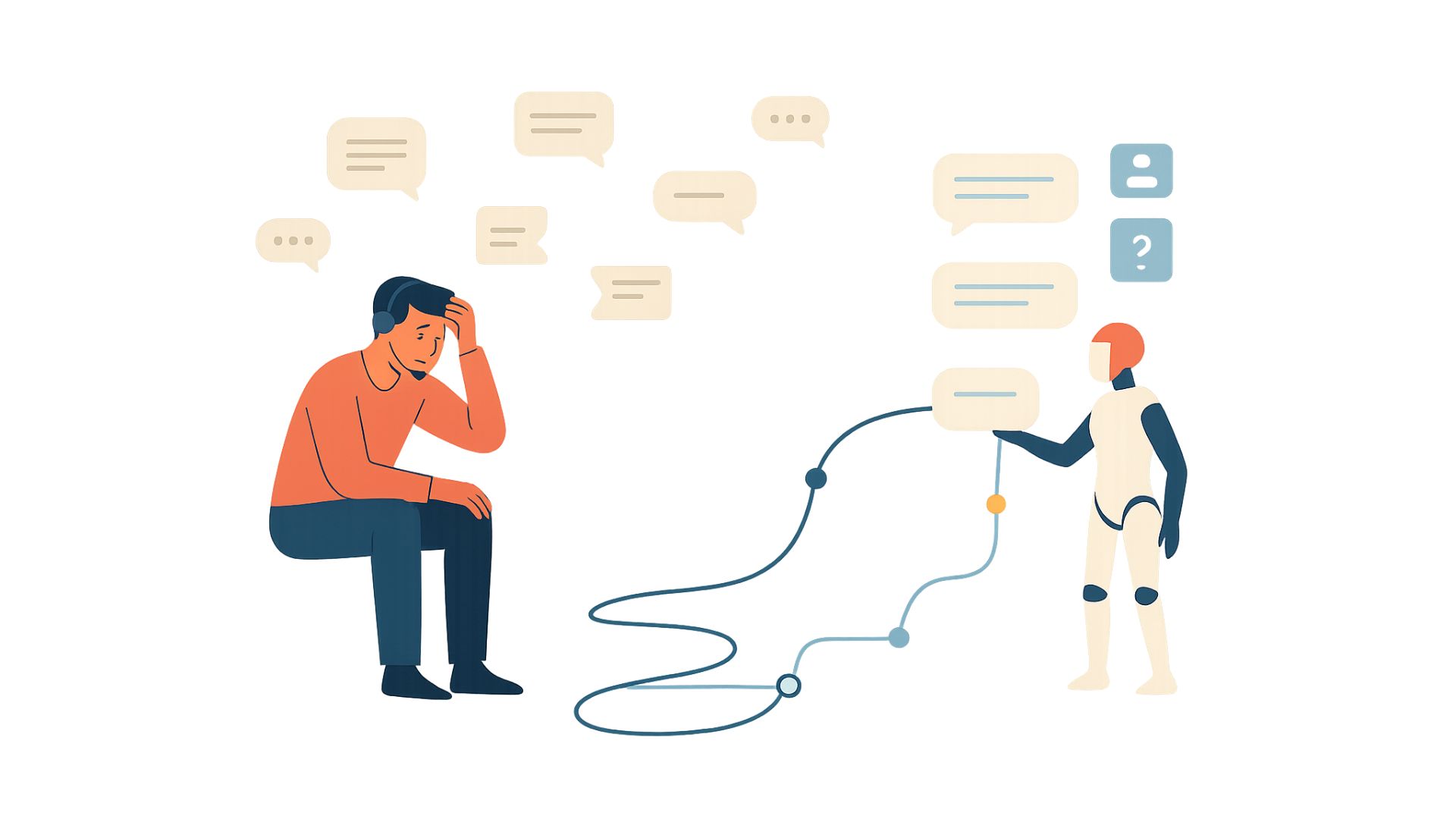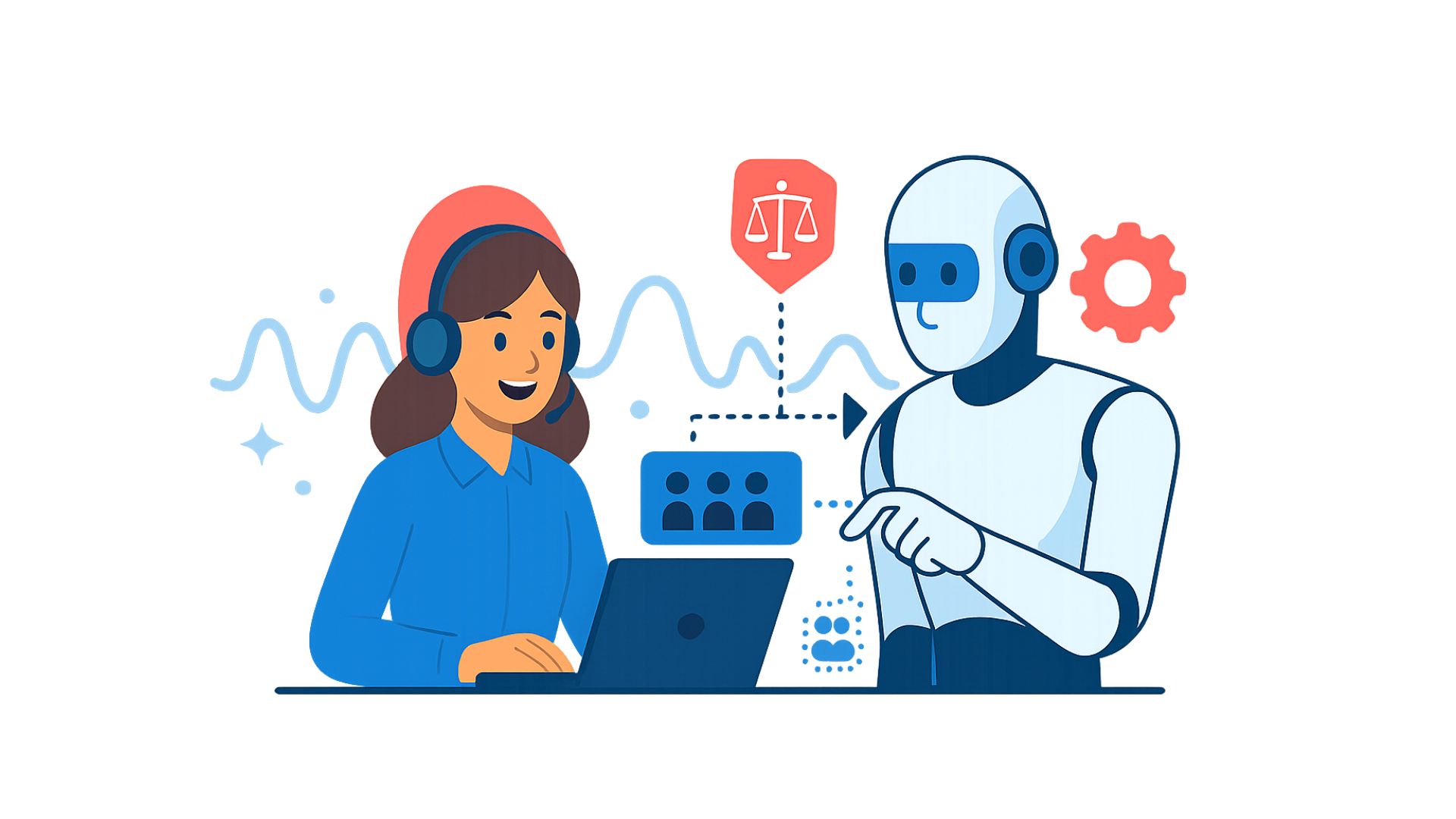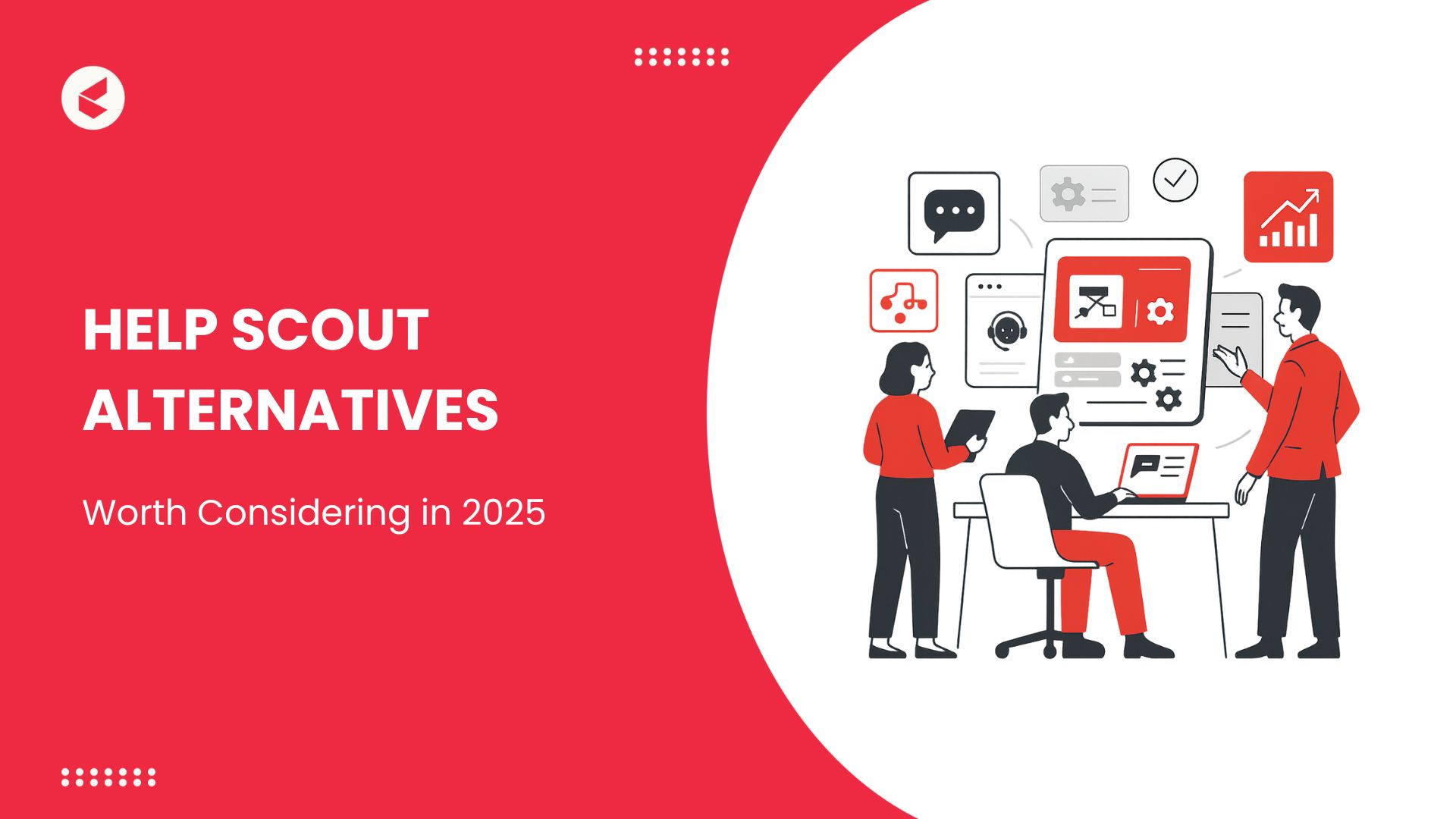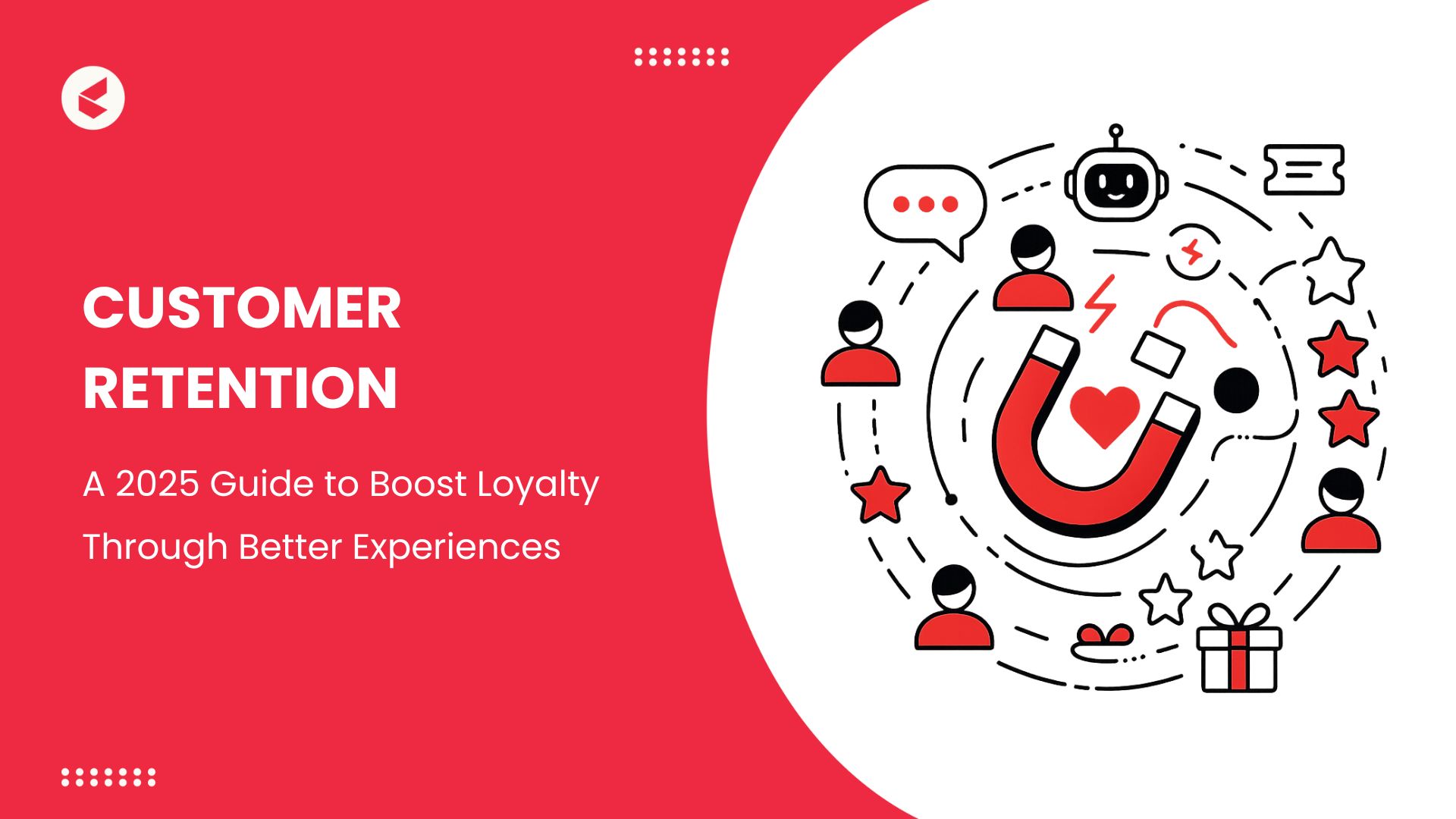What Is Customer Lifetime Value?
Customer lifetime value, or yet again, lifetime customer value (CLV, CLTV, LTV, or LCV) is a metric that quantifies the total revenue generated by a single customer over the span of the business relationship.
CLV is conceived as a profit-making concept that tells you whether your company’s future will be profitable or not.
- Some customers make repeat purchases and return to you because you provide the best value for money or plainly because they rejoice in the shopping experience you offer.
- So these customers continue to cling to you, and you see them as the most valuable of the lot.
- Yet, while they keep returning to you, don’t you agree you should just realize how much your valuable customers can be worth?
- When the worth is so much so that it can maximize your ROI remarkably, isn’t it sensible to entwine the customers in your business relationship for as long as possible to mine additional profit?
Image: Customer Retention Statistics
Let’s go deeper to know more about the business benefitting aspects of Customer Lifetime Value.
Why Is The Lifetime Value Of A Customer Important?
CLV is critical for the following reasons:
1. Increases Profit
- We understand that when a customer makes their first purchase, they add to future value if we can successfully retain them. You have generated a profit when the worth of a customer exceeds the cost of acquiring the customer.
- And you keep profiting as long as you keep the particular customer.
2. Levels Up Marketing Targets
- CLV assists you in positioning marketing targets to generate more income. It is because CLV precisely identifies possible customer bases that may be targeted for increased sales.
- In the long term, you save a lot of money as knowing CLV can decrease the need to spend more money on marketing and advertising to attract new customers.
3. Raises The Chances of an Upsell
- We’re talking about your valued customers who already buy a lot of your items or services. Since they’re the convinced lot, targeting them for up-sell or cross-sell proposals, guarantees a better success rate.
- These offers, on the other hand, may not be as appealing to the other group of customers who are less interested in your company.
- But just don’t leave them there; instead, focus on marketing strategies to convert them into valuable customers.
4. Boosts Brand Loyalty
- Loyalty programs are effective techniques to improve purchase frequency since they encourage customers to buy more frequently in order to obtain enticing rewards.
- CLV estimates reveal which customers generate the most revenue. Using this knowledge, allocate more marketing budget to customer segments that are more profit bearing.
- Thus, it helps to improve the loyalty of the particular customer segment. Besides, you are saved from laying the marketing budget on the customer segments with poor CLV.
- Customers benefit from loyalty programs because they receive more value each time they shop, and you benefit from their repeated purchases.
5. Allows You to Optimize Strategies for Customer Retention and Acquisition
Businesses celebrate when a greater number of customers arrive. So you invest money on initiatives to get more customers.
- Given the higher acquisition costs over retention costs, as revealed by studies, CLV can help you balance your marketing spend between customer acquisition and retention.
- The best mode to scrape out a money-spinning situation is always to retain your current customers and sell more of your products to them.
- You can increase your profit margin by using CLV to determine how much of your budget should be spent on acquiring new customers based on the value they bring to your business.
- If your CLV is low, strengthen your retention strategies to improve your CLV and hence trigger positive cash flow.
Image: Customer Retention Strategies
6. Aids In The Identification Of Key Customer Segments
- Calculating the Customer Lifetime Value can assist in identifying the valuable customer categories that bring in the most value.
- If CLV tells you how valuable a customer is to your business, it pretty much determines your company’s future profitability as well.
7. Assists In Identifying Vulnerabilities
- Lower CLV compared to acquisition expenses can help you uncover any negative trends that are influencing your consumers to abandon you.
- Feedback collection and action thereupon can help rectify issues as they arise.
How Can You Calculate LCV?
Calculate Average Purchase Value, Average Purchase Frequency, and Average Customer Lifespan from the following steps.
Step 1:
Average Purchase Value (APV) is computed by adding up all of the income collected during a given period and dividing it by the total number of sales generated during that same period.
If the revenue generated per month equals $40,000 from 200 sales, the APV for the period is $40,000 / 200 = $200.
Step 2:
If a customer made numerous purchases over a certain time period, they are only counted once in the calculation.
If the revenue generated equals $60,000 in a year from 30 customers who collectively made 600 purchases, then the APF is 600 purchases / 30 customers = 20 times.
Step 3:
Average Customer Lifespan (ACL) is computed by adding all of your customer lifespans and dividing by the total number of customers.
Step 4:
Now that we have all of the necessary components, we can determine CLV by multiplying everything together.
For instance, with an Average Purchase Value of $300, an Average Purchase Frequency of 6, and an Average Customer Lifespan of 36 months, the Customer Lifetime Value is:
CLV = $300 * 6 * 36 = $ 64,800.
What Is Client Retention?
Client retention value refers to a company’s capacity to keep its customers over time. It is a percentage-based indicator that calculates the number of customers retained over a certain time period.
The following is the formula for calculating Client Retention Rate:
Image source: Product Plan
Retention rate % = [Number of Customers at End of Period — Number of Customers Acquired During the Period) / Number of Customers at Start of Period] x 100
The formula shows that the proportion of new clients gained and the loss of existing clients has an effect on client retention.
Why Is Client Retention Important?
- Client retention gauges a company’s performance in obtaining new clients and satisfying existing ones.
- Allows you to deliver and extract more value from your current customer base.
- It is 5 times more expensive to acquire new customers than it is to retain existing ones. If your retention methods are ineffective, you may continue to lose customers, prompting you to acquire new ones, which is a red flag signaling a risky way of running the business.
- Customers that are retained, loyal and satisfied are more likely to refer your business to family and friends, bringing you new customers while saving you money on acquisition costs.
- In the long run, it helps to strengthen ROI. Reports reveal, “Increasing a brand’s customer retention rate by 5% increases the profit by 25-95 %.”
Customer retention value sets us on the right trajectory to increase the number of repeat customers, which eventually increases the profitability of each existing customer or the Customer Lifetime Value.
How Can Customer Retention and Lifetime Value be Improved?
1. Customer Segmentation
If you haven’t regarded customer segmentation seriously enough as a key business strategy, you cannot work around maximizing the CLV.
- Segmentation is the basis that lets you properly align the marketing campaigns be it through SMS, email, social media, or any other channel.
- Segmenting customers to evaluate CLV segment-wise, allows you to channel the appropriate promotional material, pricing policies, loyalty programs, special offers, and discounts to the most valuable customers.
- A worthwhile software solution for customer relationship management can help with customer segmentation based on any demographics.
2. Use The Freemium Model
- When the word “free” never leaves one’s senses, a Freemium model (ideally for subscription-based or SaaS businesses) can entice customers to become hooked to your products while they enjoy the free perks.
When your service becomes a part of their business, they will almost certainly purchase the premium features.
- A different approach can be undertaken for eCommerce stores. Make catchy discount offers or reward points for upcoming purchases for new customers.
Market less frequently purchased items, such as durables, as the best gifting option.
The bottom line is, to invent and incorporate ways to retain the customers, hence elevating CLV.
3. Acknowledge Customer Purchases
Whenever customers make a purchase, the first or the twentieth time, send their way a meaningful ‘Thank You’ message or email.
The benefits are many,
- You are merely reminding them about a pleasant buying experience.
- In the email, include links to your self-help features or website where customers can learn more about your products.
- If you have any new offerings planned for the season, please add them as well.
- Take care not to come out as too pragmatic or business-like. Work rather on developing relationships with customers.
4. Provide A Delightful Customer Experience
No matter whether customers have placed the order or availed of a service; deliver it in the best way possible. And how?
- The solution is automation, as offered by intelligent technology like AI-powered Customer Relationship Management (CRM) software.
- The number of mundane, repetitive operations that a CRM program can automate and smooth out for you is amazingly vast, just so you end up presenting only the greatest service or shopping experience to customers.
5. Rouse the Dormant Clients Occasionally
We are mindful that there’s another batch of customers who are less engaged, or uninterested in your products or services.
- Follow them via well-targeted emails, promising better sales bargains this time and, more assuredly, asking for feedback on their experience.
- Based on how effective your approach is, you may be able to retain the customers who are on the verge of churn.
- Inactive customers may have completely overlooked your brand, so check-in emails can remind them about your store and encourage them to plan their next purchase with you.
6. Loyalty Schemes
Who doesn’t welcome special considerations?
Rewarding loyal clients can inspire them to stick with your brand. Create a variety of appealing strategies to improve your loyalty programs. This can help you keep your customers and enhance your CLV.
7. Increase Brand Awareness
This will be one of your prime areas of responsibility.
- Reach out to every medium where your customers can see and hear your brand; to ensure that customers form an accurate impression of your brand.
- Monitor social media, the most happening avenue of discussions, conversations, and reviews about brands, shopping experiences, and feedback.
- Use social listening tools to receive alerts when your brand is mentioned so you can stay on top of what’s going on in the customer world.
- Pick up intelligent AI-backed software solutions to make your service and sales run more smoothly; nevertheless improving CLV through better customer experience.
- Help desk software with social media integration is also a total game-changer in this situation.
Create tickets in your help desk inbox for customer postings or messages on your social media help account.
Reply to them directly from the same inbox, and the responses are shared on social media just as they should be.
You want to make certain that the customers you acquired through diligence, have a positive customer experience, and that they continue to benefit from your offerings.
Find a free demo of Kapture to improve your CLV by upgrading the customer experience.
About the Author | |
 | Seema C Mohan |
| Seema C Mohan is passionate about all things XaaS and loves to write value-added content. She has been in Business Process Management in the past and has published technology articles in journals. | |
,
,
,
,
,
,
,
,
,
,
,
,
,
